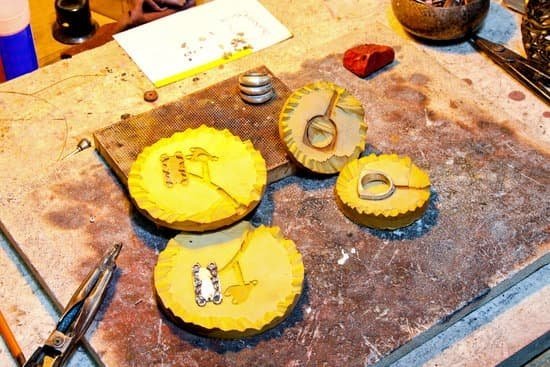Diamonds have long been prized for their dazzling beauty and allure, adorning the fingers, necks, and ears of individuals seeking to make a statement or celebrate a special occasion. However, beyond their role as exquisite jewelry pieces, diamonds possess unique properties and capabilities that extend far beyond adornment. These precious gemstones find themselves at the heart of numerous industries and technologies, playing a vital role in everything from cutting-edge scientific research to advancing healthcare and powering the future.
Defined by their exceptional hardness and brilliance, diamonds hold immense significance both culturally and historically. Symbolizing love, wealth, and power, diamonds have been treasured throughout time as prized possessions and symbols of status. Yet their appeal goes well beyond sentimentality; it is rooted in their remarkable physical attributes. Diamonds are renowned for being one of the toughest natural materials on Earth due to their strong covalent bonds.
In this captivating journey through the multifaceted world of diamonds, we will explore the various applications of diamonds other than jewelry. From their industrial use in cutting and grinding tools to their pivotal role in high-tech manufacturing, we will uncover how diamonds contribute to sectors such as construction, mining, manufacturing, and more.
Furthermore, we will delve into how these gemstones are harnessed in healthcare settings to save lives through diamond-coated surgical instruments and diagnostic techniques. Additionally, we will discover how diamonds propel scientific advancements by enabling high-pressure experiments that unravel mysteries about our planet’s deep interior and potential extraterrestrial life forms.
As we embark on this exploration into the many dimensions of diamonds’ utility outside of jewelry-making, it becomes evident that these gemstones hold endless possibilities for innovation and positive impact across various industries. Whether it be revolutionizing energy production or adding an extraordinary touch to artistry and design with diamond sculptures or luxury home decor pieces – diamonds continue to inspire awe while shaping our world in more ways than meets the eye.
So let us embark on this journey together, and uncover the mesmerizing capabilities of diamonds that stretch far beyond their radiant beauty.
Industrial Applications of Diamonds
Diamonds are not only valued for their beauty and elegance as jewelry pieces but also for their exceptional physical properties that make them highly useful in various industrial applications. Their remarkable strength and hardness make diamonds ideal for cutting, grinding, and drilling materials that other tools may struggle with. As a result, diamonds play a critical role in industries such as construction, mining, and manufacturing.
In industrial settings, diamonds are incorporated into tools and machinery to enhance their efficiency and effectiveness. Diamond-tipped saw blades are commonly used in the construction industry to cut through tough materials like concrete, asphalt, and stone. The hardness of diamonds allows these blades to retain their sharpness even after prolonged use. Additionally, diamond grinding wheels are widely used in manufacturing processes to shape or finish hard materials such as glass, ceramics, and metals.
One of the most significant applications of diamonds in industry is in drilling operations. Diamond drill bits are extensively utilized in mining exploration to access underground resources. These drill bits can penetrate solid rock formations quickly due to the superior hardness of diamonds, allowing for efficient extraction of minerals or fossil fuels.
| Industry | Diamond Application |
|---|---|
| Construction | Diamond-tipped saw blades for cutting concrete and stone |
| Manufacturing | Diamond grinding wheels for shaping hard materials like glass and ceramics |
| Mining | Diamond drill bits for exploration of underground resources |
The industrial applications of diamonds go beyond just adding sparkle to jewelry. The strength and hardness of diamonds make them indispensable in various industries, contributing to the advancement of technology, construction projects, and resource extraction. By recognizing the multifaceted nature of diamonds and their industrial significance, we can gain a deeper appreciation for these precious gemstones.
Diamonds in Technology
The world of technology relies heavily on diamonds to power its advancements and innovations. Diamonds, known for their exceptional hardness and thermal conductivity, play a vital role in high-tech manufacturing processes. In this section, we will explore how diamonds are used in producing precision optics, lasers, semiconductors, electronics, satellites, and communication systems.
- Precision Optics: Diamonds are used in the production of precision optics due to their superior light transmission properties. They are incorporated into lenses and mirrors for applications such as microscopy, laser focusing systems, and telescopes. The exceptional clarity of diamonds allows for high-resolution imaging and precise beam control.
- Lasers: Diamonds have unique properties that make them ideal for use in lasers. They can be used as both an optical medium and a heat sink due to their high thermal conductivity. Diamonds coated with various materials can also be used as laser windows or output couplers. These diamond-based lasers find applications in industries ranging from medicine to manufacturing.
- Semiconductors: Diamonds possess excellent electrical properties that make them suitable for the production of high-performance semiconductors. They can function at high temperatures and frequencies while maintaining good thermal management capabilities. Some researchers are exploring the use of diamonds as a potential replacement for silicon in certain electronic devices.
- Electronics, Satellites, and Communication Systems: The integration of diamonds into electronic components enhances their efficiency and reliability. Diamonds are utilized in these technologies as heat spreaders or thermal conductors to dissipate excess heat generated during operation efficiently. This capability is particularly important in satellite systems where temperature management is critical.
Diamonds as Medical Marvels
Diamonds have found their way into the field of medicine, not just as beautiful adornments, but as valuable tools in saving lives and advancing healthcare. The unique properties of diamonds make them ideal for various medical applications, ranging from surgical instruments to diagnostic tools. In this section, we will explore the fascinating ways in which diamonds are transforming the medical industry.
Diamond-Coated Surgical Instruments: Cutting-edge Precision and Safety
One of the remarkable uses of diamonds in medicine is in the coating of surgical instruments. Diamond-coated instruments offer significant advantages over traditional surgical tools. The hardness and durability of diamonds make them highly resistant to wear and corrosion, ensuring that these instruments maintain their sharpness and precision even after multiple uses. This longevity reduces the need for frequent replacements, leading to cost savings in healthcare facilities.
Furthermore, diamond-coated surgical instruments also provide enhanced biocompatibility and reduced friction during surgeries. These qualities result in smoother incisions and less tissue damage, leading to faster healing for patients. Additionally, diamond coatings have antimicrobial properties, reducing the risk of infections associated with surgical procedures.
Diamonds in Medical Diagnostics and Treatments
Diamonds are being utilized in innovative ways to improve medical diagnostics and treatments. One example is their use in early cancer detection through Raman spectroscopy. By using lasers to analyze the chemical composition of tissues, doctors can detect abnormal cells indicative of cancer at an earlier stage when treatment options are more effective.
In addition to diagnostics, diamonds are also utilized in medical treatments such as radiation therapy for cancer patients. The unique ability of diamonds to emit precise and focused beams of radiation makes them ideal for delivering targeted doses directly to tumor sites while minimizing damage to surrounding healthy tissues.
Furthermore, researchers are exploring the potential use of diamond nanoparticles for drug delivery systems due to their biocompatible nature. These nanoparticles can safely transport medications directly to affected areas within the body, maximizing the effectiveness of treatments while minimizing side effects.
Bioimaging and Prosthetics
Diamonds are also proving to be valuable in the field of bioimaging. Their optical properties allow for high-resolution imaging, enabling scientists to study cellular structures and processes with unprecedented detail. This enables better understanding of diseases and facilitates the development of more targeted treatments.
Moreover, diamonds are being incorporated into the fabrication of prosthetic implants and devices. The biocompatibility, strength, and wear resistance of diamonds make them suitable materials for hip implants, dental prosthetics, and cardiovascular devices. These diamond-enhanced medical devices improve patients’ quality of life by providing durable solutions that require less frequent replacements.
The use of diamonds in medicine is a testament to their versatility beyond traditional applications in jewelry. From enhancing surgical procedures to revolutionizing diagnostics and treatments, diamonds are playing a vital role in saving lives and advancing healthcare. Continued research and innovation in this field hold promise for even more groundbreaking uses for these extraordinary gemstones.
Diamonds in Scientific Research
Diamonds have proven to be incredibly valuable in scientific research, playing a crucial role in uncovering the secrets of the universe. With their unique properties, diamonds have become indispensable in cutting-edge experiments and studies. Researchers across different fields utilize diamonds to explore Earth’s mantle, investigate planetary interiors, and even search for signs of life on other planets.
One significant application of diamonds in scientific research is their use in high-pressure and high-temperature experiments. Diamonds are renowned for their exceptional hardness, making them ideal for creating extremely intense conditions in the laboratory.
Scientists can subject diamonds to extreme pressure and temperature to simulate environments found deep within the Earth or other celestial bodies. This allows them to study various phenomena such as the formation of minerals under extreme conditions or the behavior of materials at high temperatures.
Diamonds also serve as powerful tools for studying Earth’s mantle and providing insights into the geological processes that shape our planet. By analyzing tiny mineral inclusions trapped within diamonds, scientists can learn about the chemical composition and conditions present deep below the Earth’s surface. This information helps researchers understand plate tectonics, volcanic activity, and the recycling of materials between the surface and the mantle.
Moreover, diamonds have been used to explore potential forms of life on other planets. Researchers have proposed using diamonds as building blocks for spacecraft that could withstand extreme conditions during interplanetary missions. Additionally, diamonds can capture cosmic dust particles that contain traces of organic matter from outer space. By analyzing these diamond-encrusted particles, scientists hope to gain insights into the origins of life on Earth and possibly discover evidence of extraterrestrial life elsewhere.
Overall, diamonds play an essential role in advancing scientific knowledge by enabling researchers to recreate extreme conditions, study Earth’s geology, and explore possibilities beyond our planet. The unique properties of diamonds continue to contribute significantly to scientific breakthroughs and expand our understanding of the universe.
| Scientific Research Applications | Examples |
|---|---|
| High-pressure and high-temperature experiments | – Simulating extreme conditions to study mineral formation
|
| Studying Earth’s mantle | – Analyzing diamond inclusions to understand chemical composition
|
| Searching for signs of life on other planets | – Using diamonds in spacecraft construction for interplanetary missions
|
Diamonds in Energy Production
The use of diamonds in energy production goes beyond their traditional role as a symbol of luxury and beauty. Diamonds have proven to be an invaluable resource in generating and distributing energy, making them a sparkling solution for sustainable power. In this section, we will explore the various ways in which diamonds are utilized in the energy sector.
Utilization in Solar Panels
One of the most significant applications of diamonds in energy production is in solar panels. Diamonds play a crucial role in enhancing the efficiency and durability of solar panels. By coating the surface of solar cells with diamond-like carbon films, manufacturers can increase light absorption and reduce reflection. This coating also protects the cells from degradation caused by environmental factors such as moisture and temperature fluctuations, resulting in longer-lasting and more efficient solar panels.
Usage in Nuclear Reactors
Diamonds are used extensively in nuclear reactors due to their exceptional thermal conductivity and resistance to radiation damage. They are employed as heat sinks to efficiently remove excess heat generated during nuclear reactions. Additionally, diamond-based sensors are utilized for measuring radiation levels, ensuring the safety and reliability of nuclear facilities.
Potential of Diamond-based Batteries
The development of diamond-based batteries shows great promise as a sustainable energy storage solution. Researchers have discovered that using diamond as a material for battery components can significantly increase energy density while maintaining stability and longevity. Furthermore, these batteries have the potential to be environmentally friendly, as they do not rely on harmful chemicals or heavy metals commonly found in conventional batteries.
Diamonds in Art and Decoration
Diamonds have long been revered for their beauty and brilliance, making them a popular choice for jewelry. However, the mesmerizing allure of diamonds extends beyond their traditional use in ornamentation. The world of art and decoration has also embraced the dazzling qualities of diamonds, incorporating them into various artistic mediums and designs.
One stunning way that diamonds are utilized in art is through diamond sculptures and installations. Artists push the boundaries of creativity by sculpting intricate pieces entirely out of diamonds or by integrating diamonds into larger sculptures. These artworks not only showcase the natural beauty of diamonds but also provide a unique and captivating visual experience for art enthusiasts.
In addition to sculptures, diamonds are also used in other forms of art and design. From luxurious home décor to high-end accessories, diamonds can be found adorning various objects that bring elegance and opulence to our surroundings. Whether it’s diamond-encrusted vases, chandeliers, or even furniture pieces, these creations demonstrate the versatility of diamonds as they elevate the aesthetics of our living spaces.
To appreciate the ingenuity behind diamond artistry, one must also consider the craftsmanship involved in handling such valuable and delicate materials. Artists who work with diamonds possess exceptional skills and expertise in shaping, setting, and arranging these precious gemstones to achieve their desired artistic vision. It is truly a testament to human creativity and innovation to witness how artists transform cold stone into breathtaking works of art.
- Subsection: Diamond Sculptures and Installations
- Exploration of the use of diamonds in sculptures and large-scale installations
- Showcasing examples of diamond artworks
- Highlighting the unique visual experience provided by these creations
- Subsection: Diamonds in Home Décor and Accessories
- Discussion on how diamonds are incorporated into luxurious home décor items
- Showcasing the use of diamonds in chandeliers, vases, furniture, etc.
- Explanation of how diamonds enhance the aesthetic appeal of living spaces
- Subsection: The Craftsmanship Behind Diamond Artistry
- Insight into the skills and expertise required to work with diamonds as an artistic medium
- Demonstration of how artists shape and set diamonds to create their desired artistic vision
- Highlighting the creativity and innovation involved in working with such valuable and delicate materials
Ethical Concerns and Sustainability Efforts in the Diamond Industry
The diamond industry has long been associated with ethical concerns, particularly regarding the environmental impact of diamond mining and the origin of diamonds. Many consumers today are becoming more conscious about the social and environmental implications of their purchases, leading to a demand for ethically sourced diamonds. In response, the diamond industry has made significant efforts to address these concerns and promote sustainability.
One prominent challenge faced by the diamond industry is the environmental impact of mining. Traditional diamond mining practices can have devastating consequences on natural ecosystems, including land degradation, deforestation, soil erosion, and water pollution. However, various initiatives have been implemented in recent years to mitigate these negative effects.
For example, some diamond companies are adopting more eco-friendly mining techniques such as responsible land management practices and reforestation efforts. Additionally, advancements in technology have allowed for more precise extraction methods that minimize damage to surrounding environments.
In addition to environmental concerns, there are also ethical issues related to the origin of diamonds. Conflict or blood diamonds, which are mined in war zones and sold to finance armed conflict against governments, have been a significant concern for the industry.
To combat this issue, international systems such as the Kimberley Process Certification Scheme were established to ensure that diamonds traded worldwide were not associated with conflicts. However, critics argue that these systems do not go far enough in guaranteeing ethical sourcing.
To address both environmental and ethical concerns simultaneously, the rise of lab-grown diamonds offers an alternative option for consumers who prioritize sustainability. Lab-grown diamonds are created through technological processes that simulate the conditions necessary for natural diamond formation. These stones have identical properties to mined diamonds but do not require extensive mining or harm to natural ecosystems. They offer a transparent supply chain that ensures traceability and eliminates ethical concerns associated with traditional diamond mining.
Conclusion
In conclusion, diamonds are much more than just beautiful jewelry pieces. As we have explored throughout this article, diamonds possess remarkable properties that make them invaluable in a wide range of industries. Their strength and hardness make them ideal for cutting, grinding, and drilling applications in fields such as construction, mining, and manufacturing. Moreover, diamonds play a vital role in high-tech manufacturing by enhancing the performance and efficiency of electronics, satellites, and communication systems.
Furthermore, diamonds have found their way into the medical field where they are used in the production of diamond-coated surgical instruments. These instruments offer numerous benefits such as increased precision and reduced friction during surgeries. Additionally, diamonds are utilized in diagnosing and treating various medical conditions like cancer and cardiovascular diseases.
Diamonds also play a crucial role in scientific research by enabling cutting-edge experiments that explore the secrets of the universe. Their use in high-pressure and high-temperature research allows scientists to study Earth’s mantle, planetary interiors, and even potential forms of life on other planets.
It is important to recognize that while these extraordinary gemstones bring tremendous value to various industries, there are ethical concerns associated with their sourcing. However, advancements in sustainable diamond sourcing practices along with the emergence of lab-grown diamonds offer the potential for a more ethical alternative.
Frequently Asked Questions
What else is diamond used for?
Besides being a popular gemstone for jewelry, diamonds are used in several other industries and applications. One significant use of diamonds is in cutting and grinding tools. Due to their exceptional hardness and durability, diamonds can be turned into abrasive products like diamond wheels or saws that provide precise cutting performance in industries such as construction, mining, and manufacturing.
Additionally, diamond-coated tools are employed in high-precision machining processes for materials like glass or ceramics. Moreover, diamonds have exceptional thermal conductivity, making them valuable for heat sinks in electronic devices such as computers, lasers, and power amplifiers.
Are diamonds used for anything besides jewelry?
Yes, diamonds have various uses beyond jewelry. One key application is their utilization in the medical field. Diamonds can be used in surgical instruments due to their ability to retain sharpness for a longer time compared to traditional metal blades.
They are also used in dental drills and burs for their durability and precision. Another non-jewelry application is the use of diamonds as decorative elements or engravings on luxury items like watches or pens to enhance their aesthetic appeal. Furthermore, diamonds find applications in scientific research as anvil cells or windows for high-pressure experiments.
What are 5 uses of diamond?
The exceptional physical properties of diamond make it valuable across diverse fields and give rise to numerous applications:

Welcome to my jewelry blog! My name is Sarah and I am the owner of this blog.
I love making jewelry and sharing my creations with others.
So whether you’re someone who loves wearing jewelry yourself or simply enjoys learning about it, be sure to check out my blog for insightful posts on everything related to this exciting topic!





